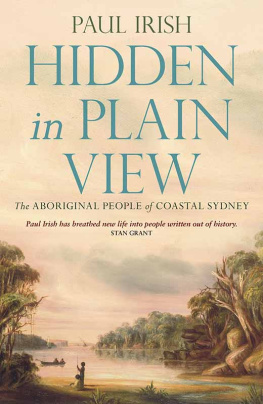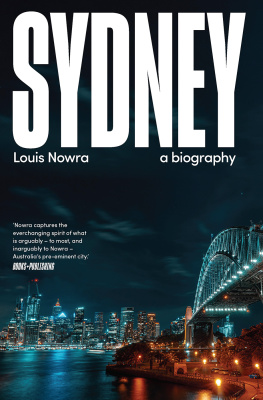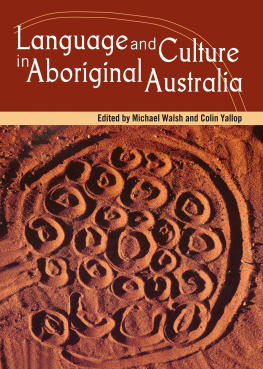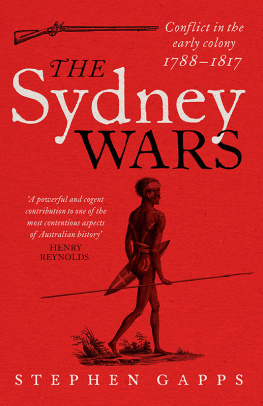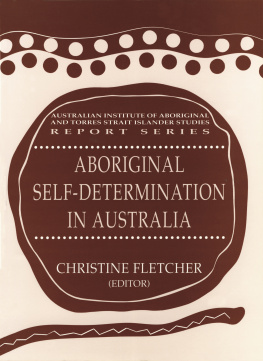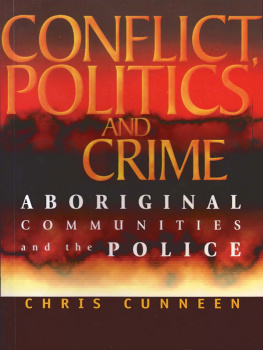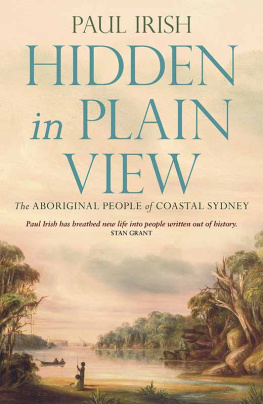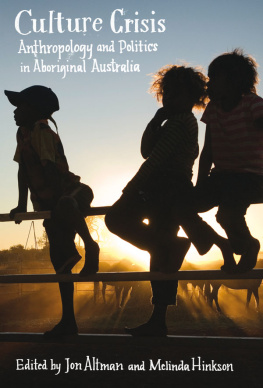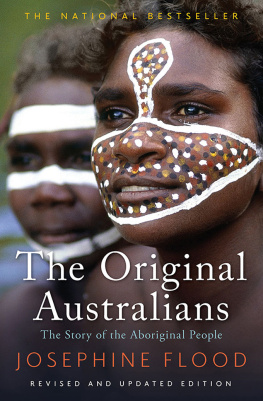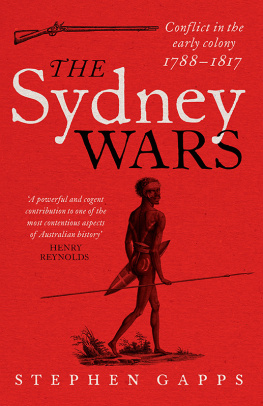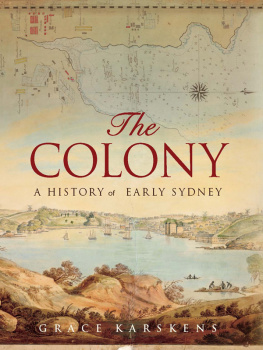HIDDEN in PLAIN VIEW
P AUL I RISH is a Sydneysider who works as a historian and archaeologist with heritage consultancy MDCA. For over ten years, Paul has been piecing together the Aboriginal history of coastal Sydney with researchers from the La Perouse Aboriginal community. It was the subject of his 2015 PhD, and the 2016 exhibition This Is Where They Travelled: Historical Aboriginal Lives in Sydney, completed as the recipient of the 2015 NSW History Fellowship. He has published several academic papers, has contributed to the Dictionary of Sydney and City of Sydney Barani websites, and regularly gives public talks and university guest lectures. This is his first book.
For Dad
and his enduring
gift of curiosity
HIDDEN in PLAIN VIEW
The ABORIGINAL PEOPLE of COASTAL SYDNEY
PAUL IRISH

A NewSouth book
Published by
NewSouth Publishing
University of New South Wales Press Ltd
University of New South Wales
Sydney NSW 2052
AUSTRALIA
newsouthpublishing.com
Paul Irish 2017
First published 2017
10 9 8 7 6 5 4 3 2 1
This book is copyright. Apart from any fair dealing for the purpose of private study, research, criticism or review, as permitted under the Copyright Act, no part of this book may be reproduced by any process without written permission. Inquiries should be addressed to the publisher.
National Library of Australia
Cataloguing-in-Publication entry
Creator: Irish, Paul, author.
Title: Hidden in Plain View: The Aboriginal people of coastal Sydney / Paul Irish.
ISBN: 9781742235110 (paperback)
ISBN: 9781742242774 (ebook)
ISBN: 9781742248240 (ePDF)
Notes: Includes bibliographical references and index.
Subjects: Aboriginal Australians New South Wales Sydney History.
Sydney (N.S.W.) History 1788-1900.
Sydney (N.S.W.) Social conditions 17881900.
Sydney (N.S.W.) Colonisation History.
Design and maps Josephine Pajor-Markus
Cover design Nada Backovic
Cover image GE Peacock 1847, Port Jackson N.S.W. View in Double Bay S. Side Middle Head in thedistance (near sunset), State Library of New South Wales DG 37.
Printer Griffin Press
COVER IMAGE: The Aboriginal people featured in paintings like this 1847 depiction of Double Bay by George Peacock have literally been hidden in plain view. Aboriginal figures were often viewed as fictional inclusions to romanticise the image on the basis that they were no longer present around Sydney Harbour by the 1840s. A range of historical records now clearly show however that Aboriginal people were still living in places like Double Bay at the time the image was made.
All reasonable efforts were taken to obtain permission to use copyright material reproduced in this book, but in some cases copyright could not be traced. The author welcomes information in this regard.
This book is printed on paper using fibre supplied from plantation or sustainably managed forests.

Contents

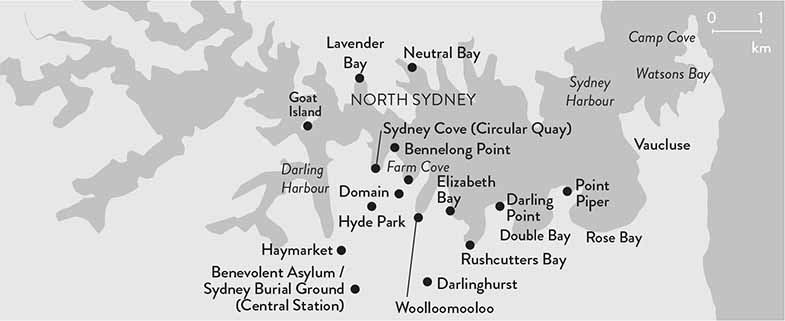
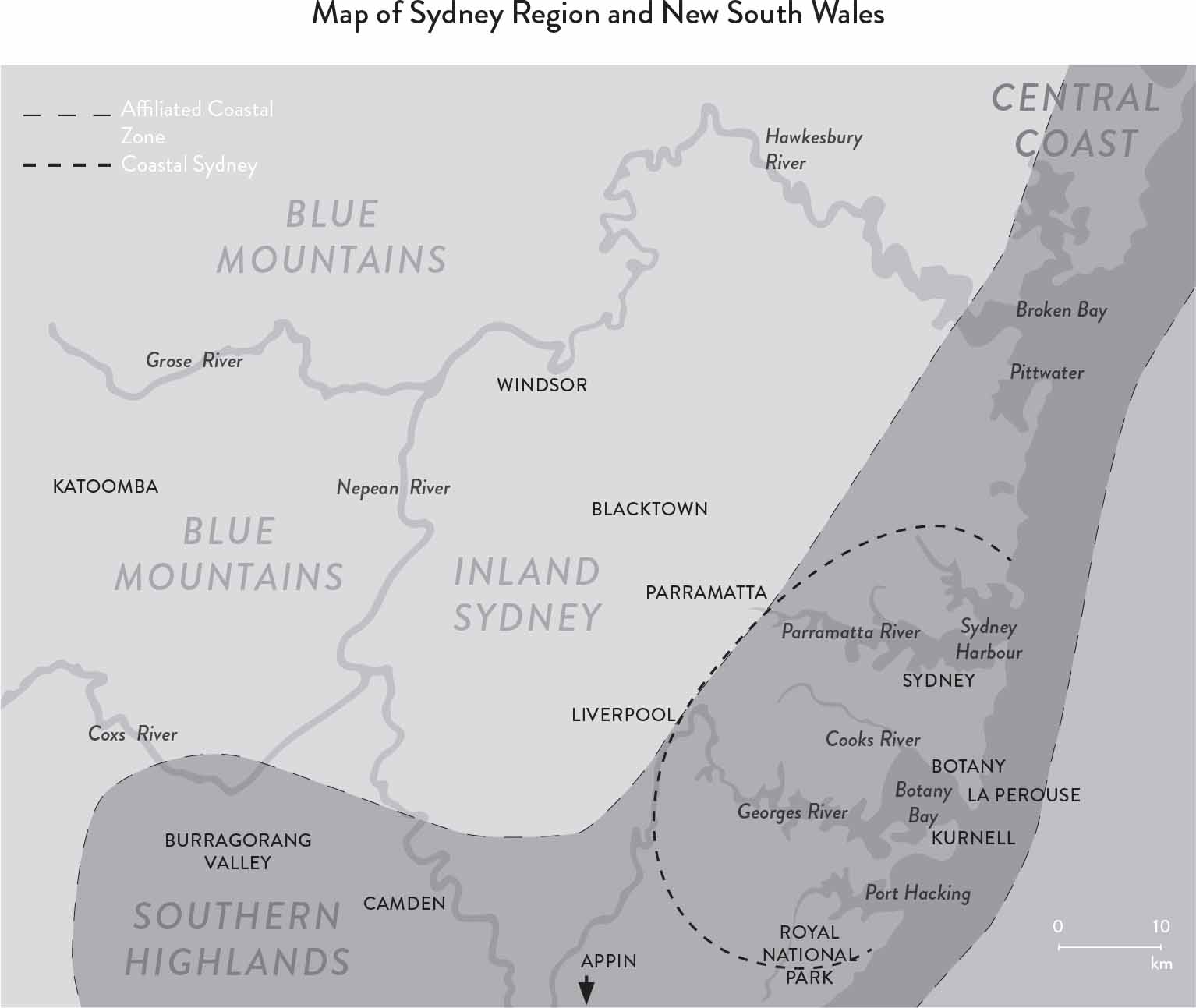
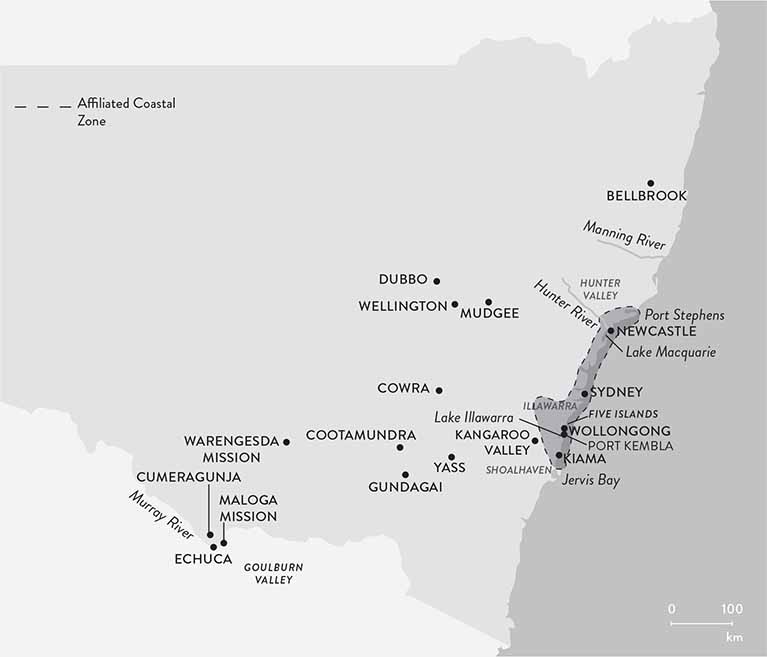
Foreword
I have been trying to find Frank Foster for most of my life not anymore. Frank is alive to me; a man who existed only as a name buried in my familys past is now flesh and blood. I know where he came from, I know who his parents were, I know what he looked like; the missing pages in his story are now filled with adventure and love and loss.
Frank Foster was my great-great-grandfather. His name appeared fleetingly in Aboriginal mission records and sketches of his story were passed down through our oral tradition. We knew him as The Schoolteacher; it always struck me as odd, this Aboriginal man of the 19th century, a schoolteacher? Yes, indeed he was.
A chance meeting with a young man from La Perouse, who was working with Paul Irish to develop a historical exhibition, unlocked the secrets of Franks past. It did so much more too; it opened the world that Frank came from. Like so many others, Frank was hidden in plain view. You can find Franks story in the pages of this book. Paul Irish has breathed new life into people written out of history. These were the people lost to the Great Australian Silence. Paul asks us to look again at Sydney, to see beyond the towers and concrete, the maze of roads and sprawling suburbs to glimpse what is eternal. Everywhere, he says, there are reminders the rock engravings, shelters, middens that tell us Sydney has an Aboriginal past.
This book tells the story of entangled lives when white met black and how a new nation was formed. This is a tale of resil-ience and ingenuity; a people rendered strangers in their own land, adapted and embraced the ways of the whites while holding to their own traditions. In these pages we meet people like Jack Harris one of the so-called lasts of his tribe who engaged with Europeans while never missing a chance to remind them this is my country.
There are others like Jack Harris: Bennelong and Mahroot and Thomas Tamara, William Warrell and Biddy Giles. These people lived, and they lived here in what we now call Sydney. Their roots go back to before the coming of the whites. These people and their ancestors saw those white sails coming through the heads at Botany Bay. This indeed, was not terra nullius an empty land. These were people of culture and language and law and politics and trade and ceremony.
They did not vanish, as popular history has had us believe. In the century after colonisation as Sydney took shape around them, the children, and grandchildren of these First Peoples remained. They continued their traditions, they lived on country and they kept kinship alive. These were people of the coast; they were mobile, setting up new camps as the dispossession continued apace. As Paul points out, despite European occupation there were gaps in the grid, and Aboriginal people filled them. They camped in the Domain and Double Bay and Camp Cove. They engaged with the social and economic life of the colony. They navigated this new world; they formed friendships and had children with the newcomers. Bennelong called Governor Phillip Beanna (father). Aboriginal people in turn took the names of prominent whites.
Of course, this was an often violent and cruel time. Paul talks about the conflict that rose as cultures and civilisations clashed. He chronicles the devastating impact of smallpox and other disease and how the people regrouped as their numbers were depleted. Amidst this, personal cross-cultural relationships continued to form. As Paul points out this was not the action of a defeated peopleAboriginal people in coastal Sydney actively engaged with Europeans to shape their futures as much as possible on their own terms. This is important. Too often we can see the First Peoples as victims, inherit-ing a legacy of suffering and injustice yes, we cannot overlook the darkness of our past, but here is a story of dynamism and creativity; people shaping their destinies in the face of devastation.
Next page
